
PPT Canadian Biomes PowerPoint Presentation, free download ID2752695
Biodiversity Habitat Loss and Loss of Biodiversity, including Invasive Species HHMI Interactive BiomeViewer Student Worksheet Nature is the life-blood of planet Earth, and biomes are our way of organizing our knowledge of ecosystems and habitats.
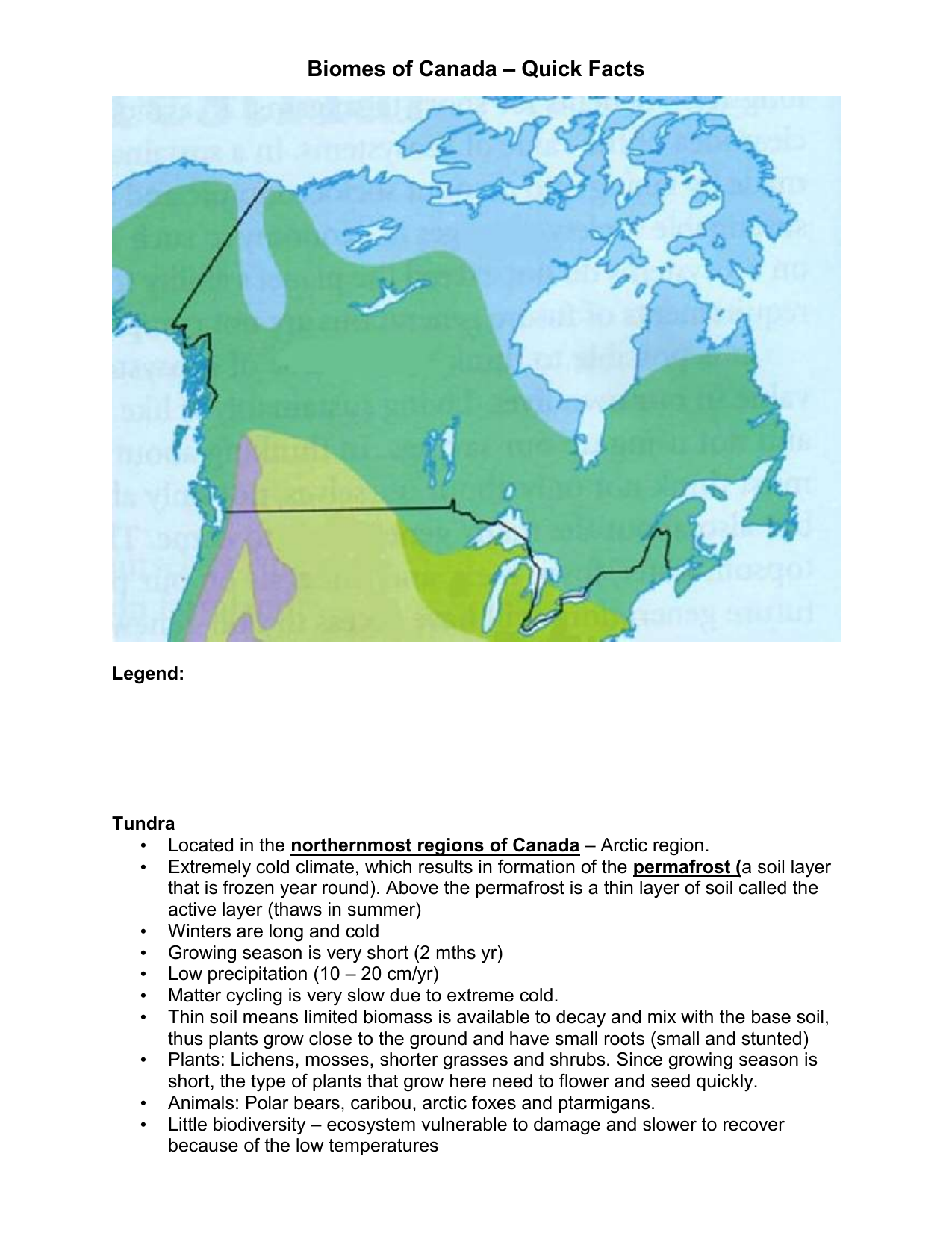
Map Of Canada Biomes Maps of the World
Tundra, which comes from a Sami word meaning "barren land," refers to a treeless arctic region characterized by permafrost. Canada's tundra is known for its freezing temperatures, lack of trees, low-growing vegetation and abundant rock outcrops. The southern boundary of tundra in Canada extends from the Mackenzie River delta to the.

Canadian Ecozones Teaching geography, Boreal forest, Geography
The northern coniferous, or boreal, forest (taiga) is the world's second largest area of uninterrupted forest; only Russia has a greater expanse of boreal forest. The severe winter and short growing season limit the number of tree species.
Map Of Canada Biomes Maps of the World
The Boreal Forest or Taiga encircles the Northern Hemisphere between the treeless Arctic Tundra and the more southerly, mid-latitude broad-leaved forest zones. In North America, the Taiga extends from the interior of Alaska and the eastern slopes of the Rocky Mountains to Newfoundland and Labrador, making it the largest vegetation region in Canada.

Map Of Canada Biomes Maps of the World
This new map, reflecting vegetation and soils adapted to climates prior to approximately 1960, can serve as a broad-scale (approximately 1:5 M to 1:10 M) geospatial reference for monitoring and modeling effects of climate changes on Canadian ecosystems.
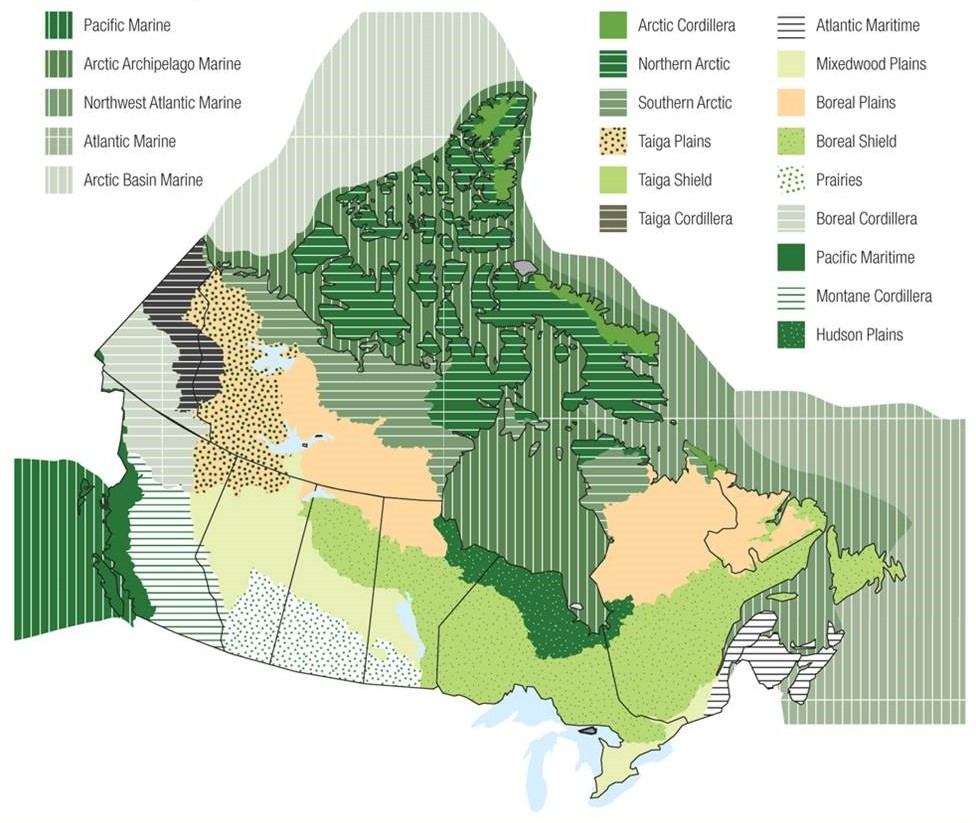
Map Of Canada Ecozones Maps of the World
Canada has a vast geography that occupies much of the continent of North America, sharing a land border with the contiguous United States to the south and the U.S. state of Alaska to the northwest. Canada stretches from the Atlantic Ocean in the east to the Pacific Ocean in the west; to the north lies the Arctic Ocean. [1]

AVIFAUNAL BIOMES IN NORTH AMERICA. IN CANADA, THE NORTHERN FOREST
Some diverse biomes represented in North America include desert, grassland, tundra, and coral reefs. Western Region Young mountains rise in the west. The most familiar of these mountains are probably the Rockies, North America's largest chain. The Rockies stretch from the province of British Columbia, Canada, to the U.S. state of New Mexico.
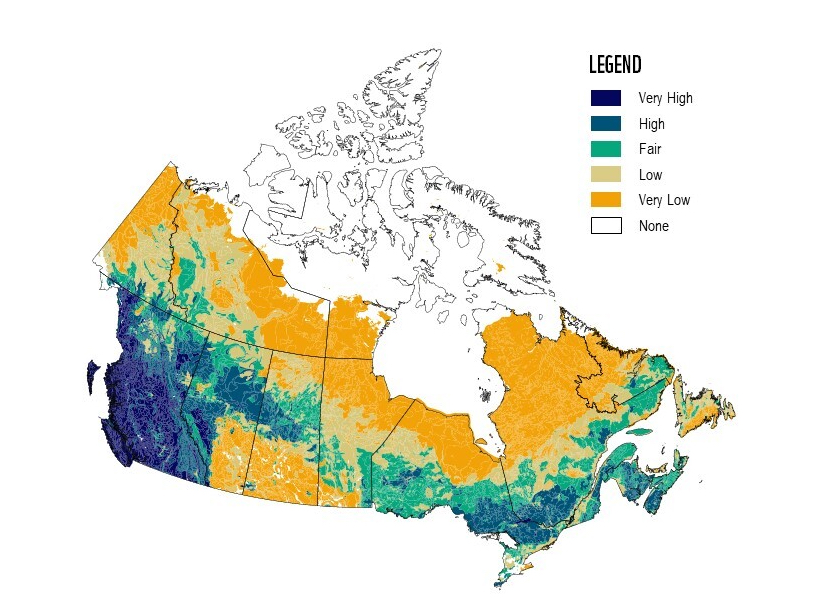
One key solution to global climate woes? Canada’s natural landscapes
You may need to look at a map of North America. Place a check mark in the box once you have completed that step. 1. The dotted lines represent the border between the U.S. and Mexico and Canada. All other lines show biome borders. Color the U.S. borders (dotted line) red. 2. Northern Canada and Alaska are tundra - color the tundra light blue 3.

Map of terrestrial ecozones in Canada (AB Alberta, BC British
February 3, 2020 6.0 How does this align with my curriculum? Province/Territory Share on: Learn about the location, plants, animals, human impacts and conservation of the boreal forest/Taiga biome and meet Anne-Claude Pépin who is a fire management technician. The Terrestrial Biomes The terrestrial world can be divided into areas called biomes.
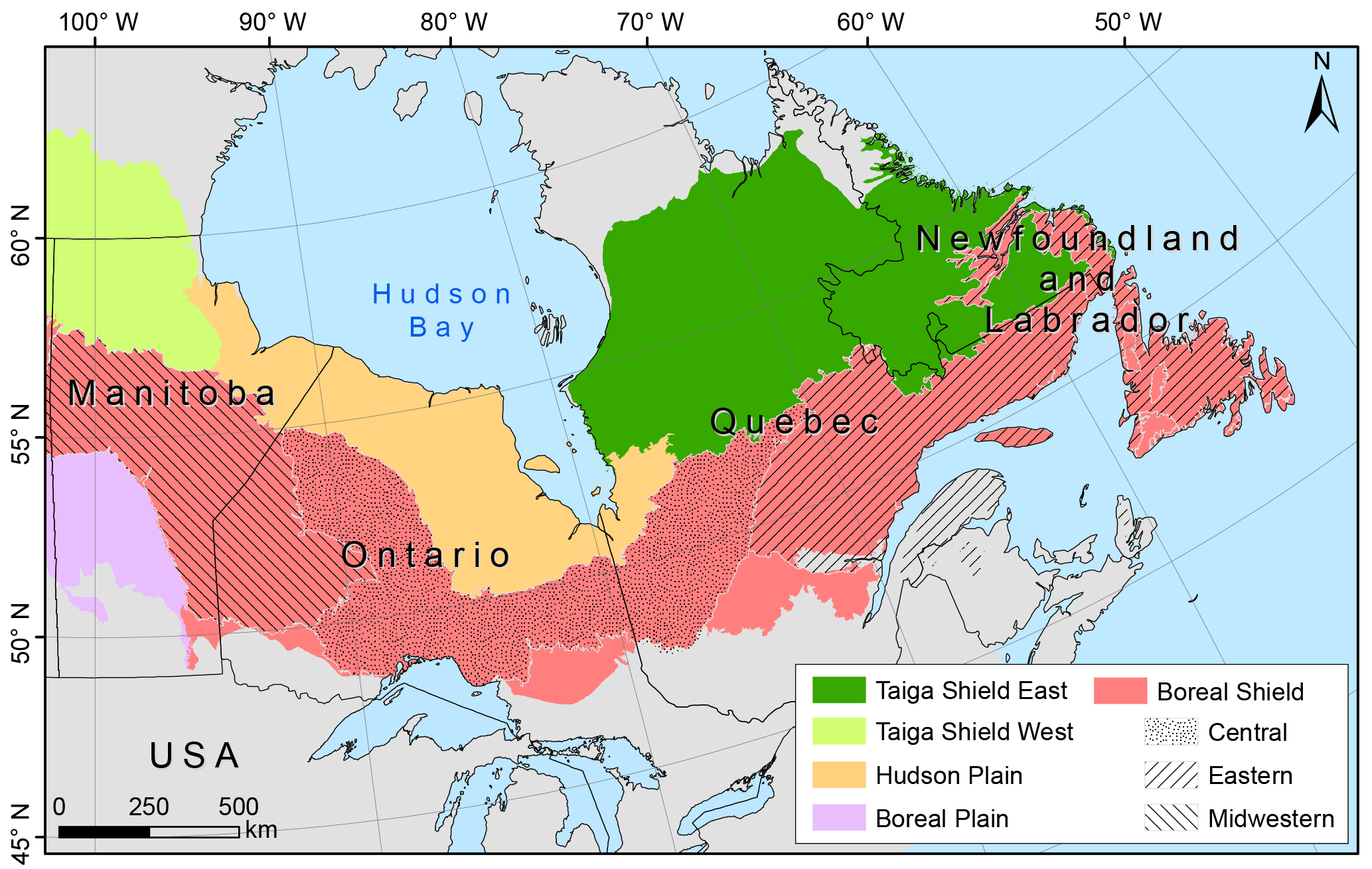
BG The pyrogeography of eastern boreal Canada from 1901 to 2012
A biome is a community of plants and animals living together in a certain kind of climate. Scientists have classified regions of the world into different biomes. Your mission, should you choose to accept it, is to investigate biomes, then test your knowledge about the biomes by completing each mission. The Great Graph Match
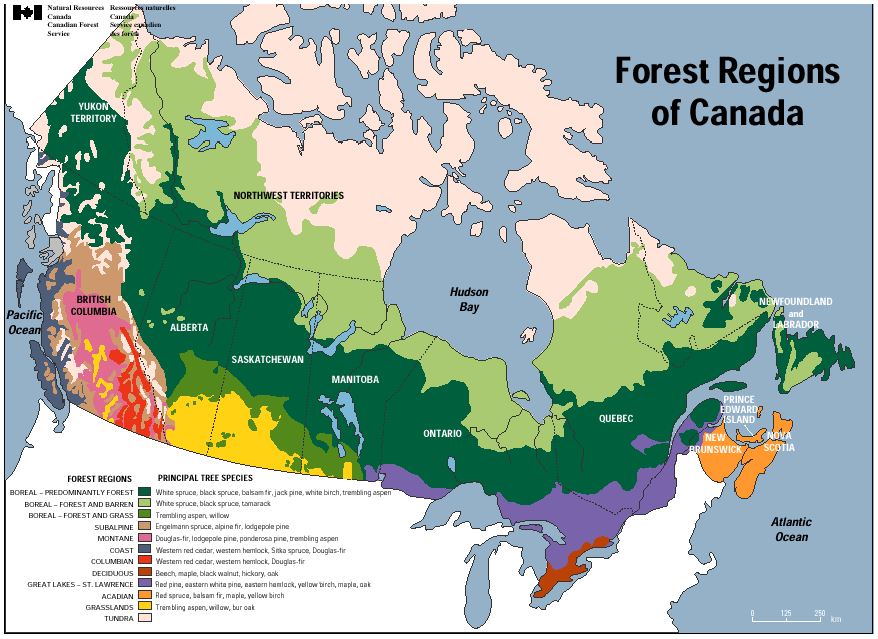
Natural Resource Map Of Canada
Use this map layer to visualize the characteristics of Earth's biomes, such as forests, grasslands, mangroves, and ice. Grades 9 - 12+ Subjects Biology, Ecology, Earth Science, Geology, Geography, Geographic Information Systems (GIS), Human Geography, Physical Geography Photograph Biomes
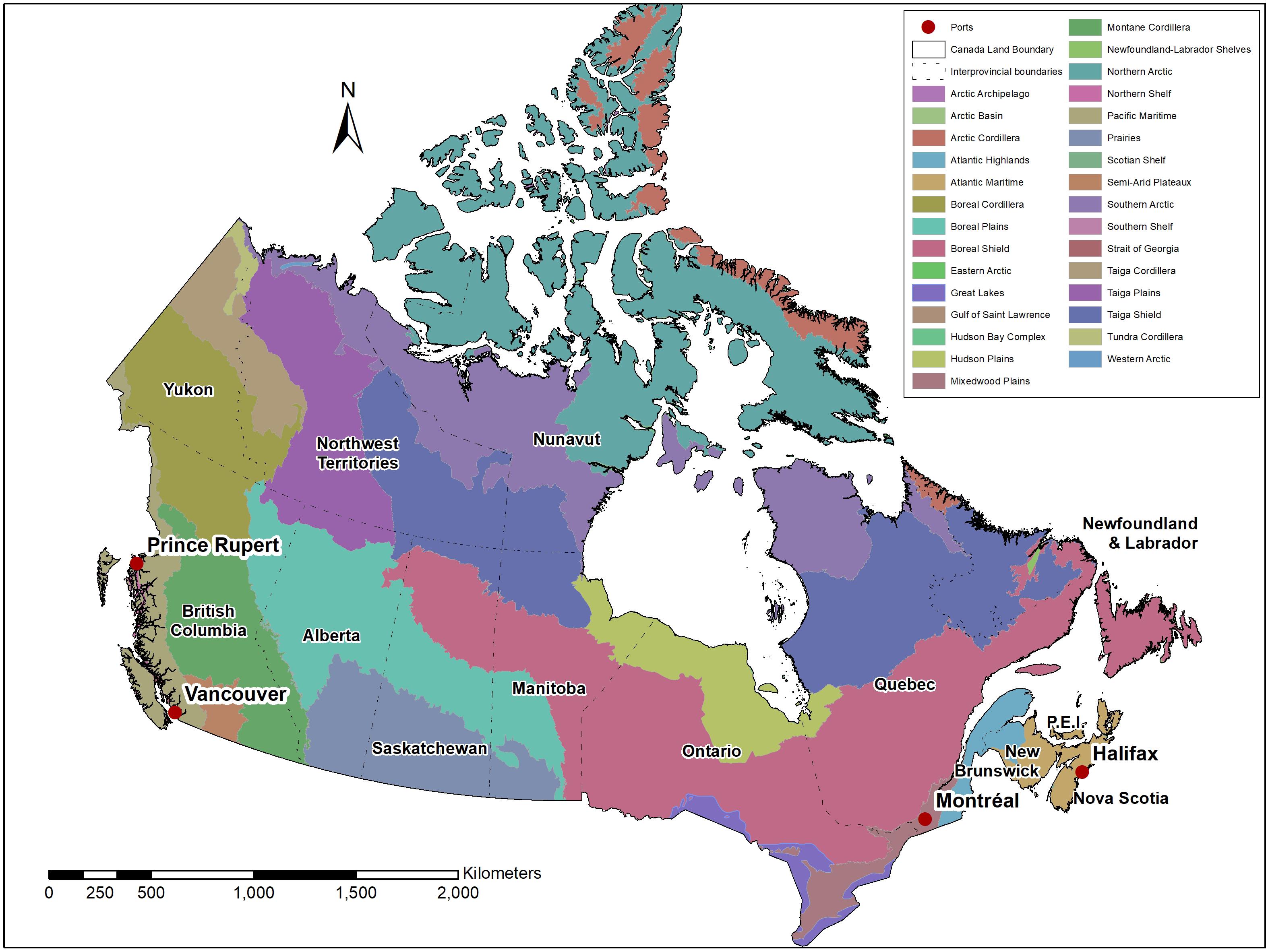
Frontiers Forest Biosecurity in Canada An Integrated MultiAgency
Forest cover percentage of Canadian provinces and territories. The forests of Canada are located across much of the country. Approximately half of Canada is covered by forest, totaling around 2.4 million km 2 (0.93 million sq mi). Over 90% of Canada's forests are owned by the public (Crown land and Provincial forest).About half of the forests are allocated for logging.
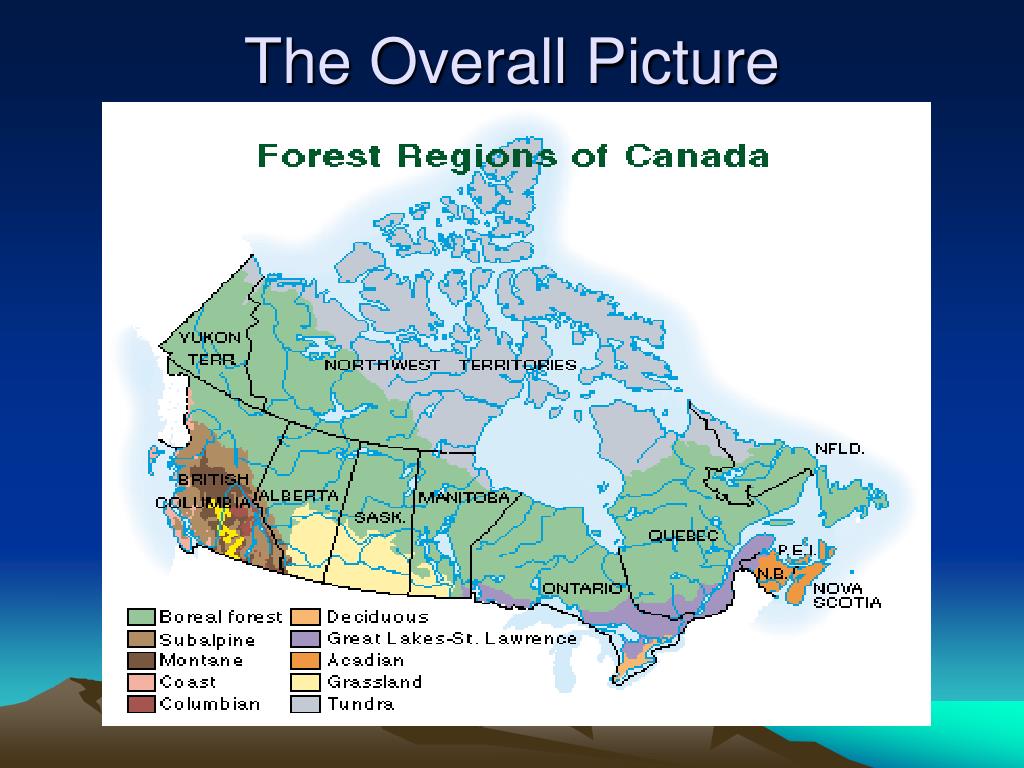
PPT Canadian Biomes PowerPoint Presentation, free download ID4662136
The map below shows where each of the eight major terrestrial biomes are located in the world. Canada contains four biomes. These are temperate deciduous forest, grassland, boreal forest/taiga, and tundra. A biome has the same characteristics no matter where in the world it is found. This means that the boreal forests of Canada look like the.

Physiographic Regions The Canadian Encyclopedia
Downloads Maps (PDF format): Level I Ecoregions of North America: Full size map (PDF, 6 mb) Level II Ecoregions of North America: Full size map (PDF, 10 mb) Level III Ecoregions of North America: Full size map (PDF, 9 mb) GIS data (shapefiles, metadata and symbology) . Ecoregions of North America (contains level I, II, and III):

Map Of Canada Biomes Maps of the World
The major biomes in Canada are Tundra, Boreal Forest, Mountain Forest , Grassland, and Deciduous Forest. Tundra is the dominant land type of the Arctic and subarctic regions. Canada's boreal forest covers almost 60% of the country's land area Moutain forests are the highest evelation of the biomes in Canada.

Where ? Canada's Biodiversity Ecozones.
Biomes of Canada Ontario can be divided into four main forest types, which can be further separated into ecological biomes. The map below shows where these forest types can be found in the province, but of course, the change is not sudden like a political border, it is transitional. Deciduous Forest